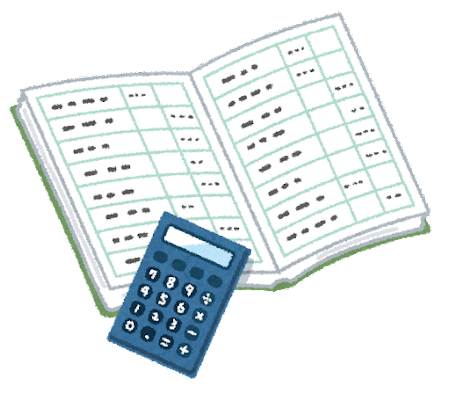Tax invoice in Japan Part.4|Free tax consultation in Sapporo, please contact Kumagai Nobuyasu accountant office!
2023/03/31
目次
Prologue
I explain the impact on the practice of accounting and tax return in this article.
Of course, the correspondence for the tax invoice system is not only correspondence to invoices, receipts etc. The practical correspondence after starting the tax invoice system make the customer trust and tax savings through purchase tax credit. The appearence of tax invoices in practice will start in this October, however it needs to prepare for the practical correspondence before starting the tax invoice system.That is why, I hope that you understand and make use of the practical response through readind this article.
The composition of the series is as follows.
Part.1 Overview of the tax invoice system
Part.2 Required items for tax invoice
Part.3 Schedule for the introduction of tax invoice
Part.4 Office works and consumption tax return after the introduction(this article)
This article is based on the tax laws and Q&A from the national tax agency as of November 2022.
Tax invoice issuing practice
I titled this section "Tax invoice issuing practice", but it does not change office work dramatically because it is just a part of the conventional sales routine. The practice of the tax invoice issuance needs only to issue receipts, delivery slips, invoices etc. for sold goods or services as usual.
However, those issued documents needs to be valid against the tax invoice requirements. What does it need to do when a customer requests reissuance the valid document due to issue the invalid document once? Only the following 6 items need to be displayed to validate an issuing document.
- The name or title of the tax invoice issuer, and the issuer registration number
- The date of transferring taxable assets
- The content of transfered taxable assets or services(When a part of taxable assets is assets applied mitigated tax rate,the fact of asset applied mitigated tax rate)
- Total amount of tax excluding price or tax including price distinct by tax rate, and applied tax rate
- Consumption tax amount distinct by tax rate
- The name or title of the tax invoice recipient(It needs not when it issues simple tax invoices)
If it is not possible to print immediately due to system problems or delays in repairs, it will be issued at a later date when it becomes possible.In addition, the invoice does not need to be a single document that meets the above requirements. It is acceptable as long as the items described across multiple documents are included by making it easy to refer to each document, such as describing the applicable tax rate on the invoice issued each time.It is not necessary to unify the format of documents to either electronic data or paper, and if a combination of multiple documents meets the invoice requirements, a combination of electronic data and paper is acceptable.
Impact of the introduction of tax invoice on accounting practices
The practical response for the tax invoice system is not only the issuing practice, but it is important to respond for the accounting pratice. I explain the correspondence for the accounting practice in this section. After the introduction of the tax invoice system, it needs to save the tax invoices to apply purcahse tax credit in principle. After introduction, the calculation of purchase tax credit changes from "rebating calculation", which means rebating the annual tax-included amount and the tax rate to "accumulating calculation", which means adding up purchase taxes of each transactions.Therefore, the amount of consumption tax recorded on accounting books needs to be the exact tax amount displayed on tax invoices in principle.
By the way, purchases and expenses which are unsubstantiated by saved tax invoices can account for expenses, but those are considered as out of consumption tax transactions and invalid for purchase tax credit.
However, for transactions exempted from issuing invoices, if certain items are recorded in the accounting book, you can receive a purchase tax credit.And until September 30, 2029, even if the transaction is not exempted and there is no evidence of invoices, when you add "taxable purchases subject to transitional measures" to the accounting book, 80% or 50% of the purchase tax amount equivalent to the purchase tax amount can be deducted.
Digital invoice in Japan
I explain the trends of digital invoice documents in this section. Document digitalisation is later in Japan. In July 2020, EIPA(E-Invoice Promotion Association) was established by some Japanese software vendors, financial institutes etc. in order to standardise the format of digital invoices and information standards for exchanging information, and to improve administrative efficiency. It is working to promote the electronic exchange of invoices and the efficiency of clerical work with using an international standard called "Peppol". Please click this link to know more.
Digital Transformation(DX) for invoice issuance and office work in Japan
I explain the efficiency of clerical work with digital invoices a little more deeply.
It does not make so efficiant to merely digitise tax invoice documents. It is because it does not save time and effort of manual entry to create invoices and entering journal entries into the accounting system. It makes dramatically efficiant to automate issuing tax invoices and entering from tax invoices.
EIPA is discussing digital invoice system focusing on operational efficiancy through digital transformation rather than digitising tax invoices. On the other hand, the digitization of documents such as receipts issued to an unspecified number of people has not progressed much, probably because many consumers are involved at present.Electronic receipts already exist in Japan, but the number of businesses which have introduced them is still limited. Although it is not directly related to tax invoices, the progress of paperless and cashless transactions may lead to discussions on the promotion of electronic receipts and the compatibility of electronic receipts with digital invoices in Japan.
In addition, from January 1, 2022, the requirements for scanning and electronically storing documents received on paper have been greatly relaxed. Even paper documents can be converted to electronic information with OCR, which reduces the time and effort required for data entry and improves the efficiency of accounting.
Calculation and tax return for consumption tax after the introduction of tax invoice system
Changing from a story about daily office work, I explain consumption tax calculation and filing after the introduction of tax invoice system in this section. Consumption tax payment calculation under the current consumption tax law is the below.
- National consumption tax to be paid(or refunded)=Sales tax received①-Purchase tax paid②
- Local consumption tax to be paid(or refunded)=National consumption tax to be paid(or refunded)×22/78
- ①Sales tax received=Annual sales amount including tax with standard tax rate(10%) applied×100÷110×7.8%+Annual sales amount including tax with mitigated tax rate(8%) applied×100÷108×6.24%
- ②Purchase tax paid=Annual purchase amount including tax with standard tax rate(10%) applied×7.8÷110+Annual purchase amount including tax with mitigated tax rate(8%) applied×6.24÷108
The above calculation method is called "rebating calculation" because it calculates by rebating the annual tax amount and tax rate. The consumption tax payment(or refund) calculation after the introduction of tax invoice system in princlple is kept "rebating calculation" on calculating sales tax amount while to be changed "accumulating calculation" on calculating purchase tax amount. It is because it can know purchase tax paid by tax invoice received from suppliers. The "accumulating calculation" method is below.
Purchase tax paid=Annual total amount of paid purchase taxes displayed on received tax invoices×78÷100
In this calculation, it addes up without dividing into the amount applied standard tax rate and the one applied mitigated tax rate.It is because the mitigated tax rate portion is the tax amount(8%)×78/100 = 6.24%, resulting in the same rate as the rebate calculation.
It can also use a method called "book stacking calculation" in which the amount of consumption tax calculated by discounting the amount of consumption tax for each transaction from the total amount of transactions including tax is included in the summation calculation.It is because if a tax invoice is not issued for a transaction that does not require a tax invoice, or if a tax invoice cannot be received due to transitional measures, the amount of consumption tax may not be determined from the tax invoice.
Some of readers may have noticed the appearance of the term “local consumption tax”. Consumption tax in Japan is the combination of national consumption tax and local consumption tax. Local consumption tax is 22% of total consumption tax and is a type of prefectural revenue.However, the calculation and filing is by the single consumption tax return form and tax payment is in the tax office collectively.
There are some exemptions to the consumption tax calculation. It can calculate sale tax received with "accumulating calculation" subject to calculating purchased tax paid with also "accumulating calculation". While, it can calculate purchased tax paid with "rebating calculation" subject to calculating sale tax received with also "rebating calculation". The reason for the conditions is to prevent excessive tax savings by the diffrence of rounding. Note that, it is subject to save the copies of issued tax inovoices and record the tax amounts displayed on the issued invoices in order to apply the "accumulating calculation" on the calculation of sales tax received.
Epilogue
I explained the impact on the practice of accounting and tax return in this article. In addition, I explained the DX, which is not directly related to the introduction of tax invoice system. Corresponding both the tax invoice system and DX makes the business operation more accurate and efficiant. Some of readers cannot image because it is stil in the future, you may image the practice of tax invoice system and DX with interest.





